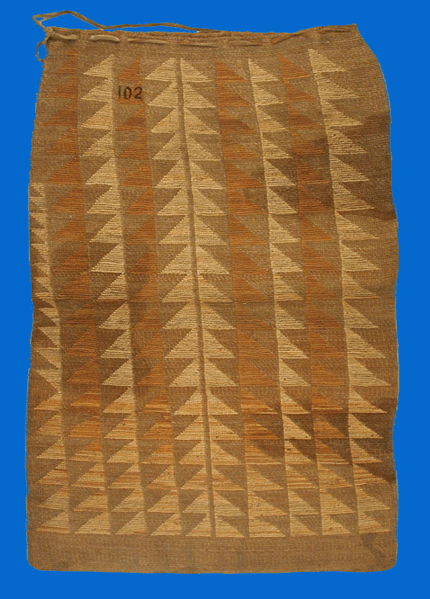THE OBERLIN BAG
 |
NEZ PERCE Twined Root Bag, ca. 1840s Indian hemp and grass Collection
of the Oberlin College Anthropology Department
This bag from the Spalding-Allen collection is the earliest known and most securely dated example of the type of flat twined storage bag that the Nez Perce call “qaqape” (pronounced kaKA’peh). Consistent with other early twined bags, this bag has a foundation structure of Indian hemp with a false embroidery decorative design of triangles and lines picked out in a lighter colored natural grass, probably bear grass. The Oberlin bag is typical of many large twined storage bags in that each side features a different design. Overall, the bag is in very good condition, suggesting that it had not been used much at the time it was collected. The black number “102” that appears on the upper left surface of the bag is probably an inventory number that was placed there at the time the bag was loaned to another institution in 1894. This event separated the bag permanently from the rest of the Spalding-Allen collection and accounts for its continued presence in Oberlin today. MARY SCHLICK'S OFFICIAL DESCRIPTION OF THE BAG.
|